How to brighten a room with a low ceiling – 5 ways to enhance light and space
Designers and paint experts share practical ways to boost brightness in a low-ceilinged space
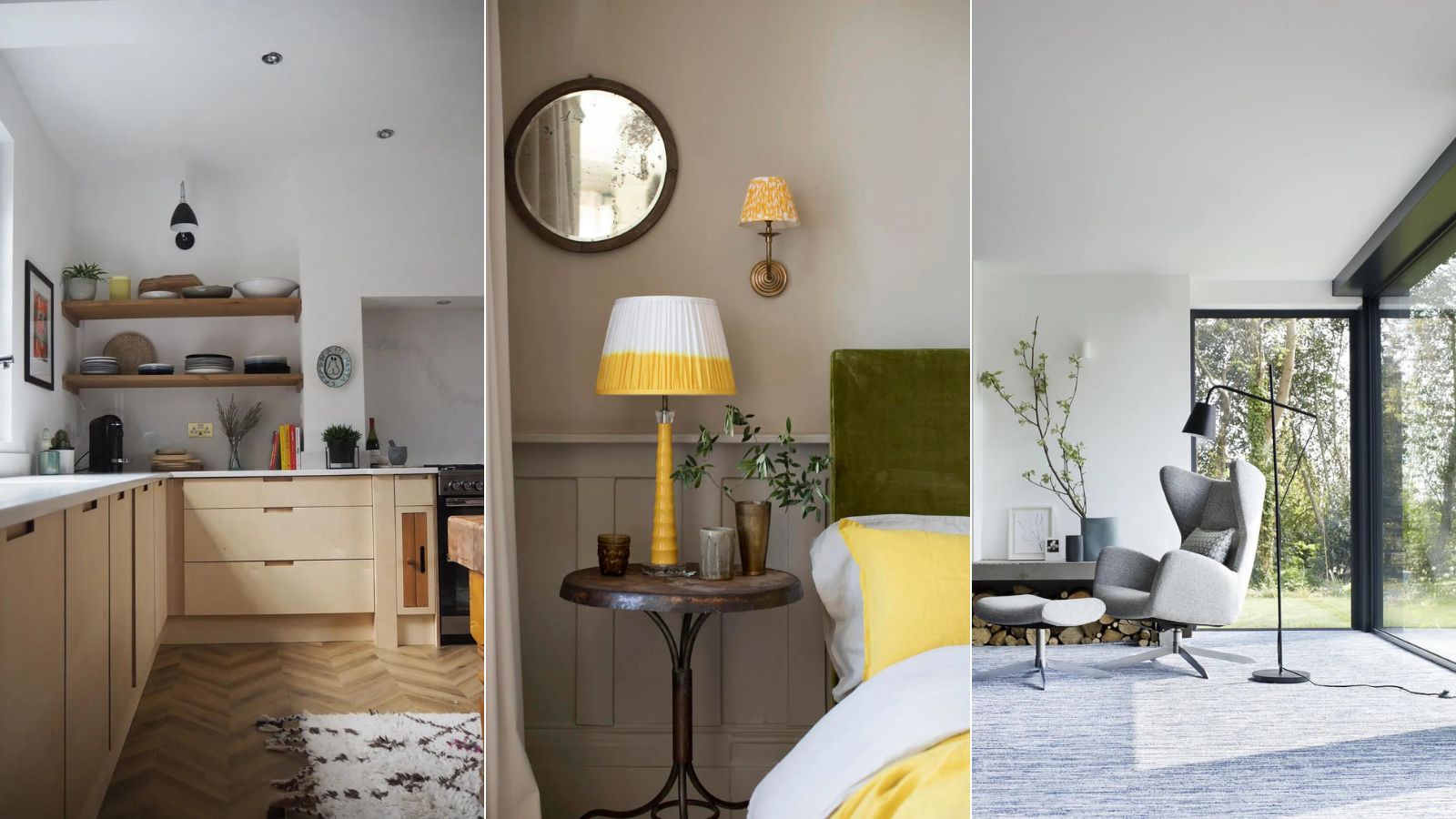

Low ceilings are by no means a deal breaker – with the clever use of lighting, paint, and decor they will simply feel like one of the many elements of the room rather than a constraint.
We asked interior designers and paint pros how to brighten a room with a low ceiling (under eight feet), and they shared various methods that will make the ceiling height less of a focus.
Whether you want to make a living room ceiling feel higher or make a bedroom ceiling look higher, it's all about visual tricks that will create the illusion of a taller space. We have also shared ways to distract attention away from the lack of height – the good news is that all of these techniques will also make a small room look bigger.
5 ways to brighten a room with a low ceiling
'With thoughtful design choices, a low ceiling can become a distinctive feature of a room’s character rather than a limitation,' says interior designer Kati Curtis. Here is what the professionals suggest.

Kati Curtis is the founder of Kati Curtis Design, an design firm based in New York City specializing in classic design with a global influence. Kati founded the studio in 2005 after 12 years of working with international architecture and engineering firms.
1. Illuminate with layered lighting
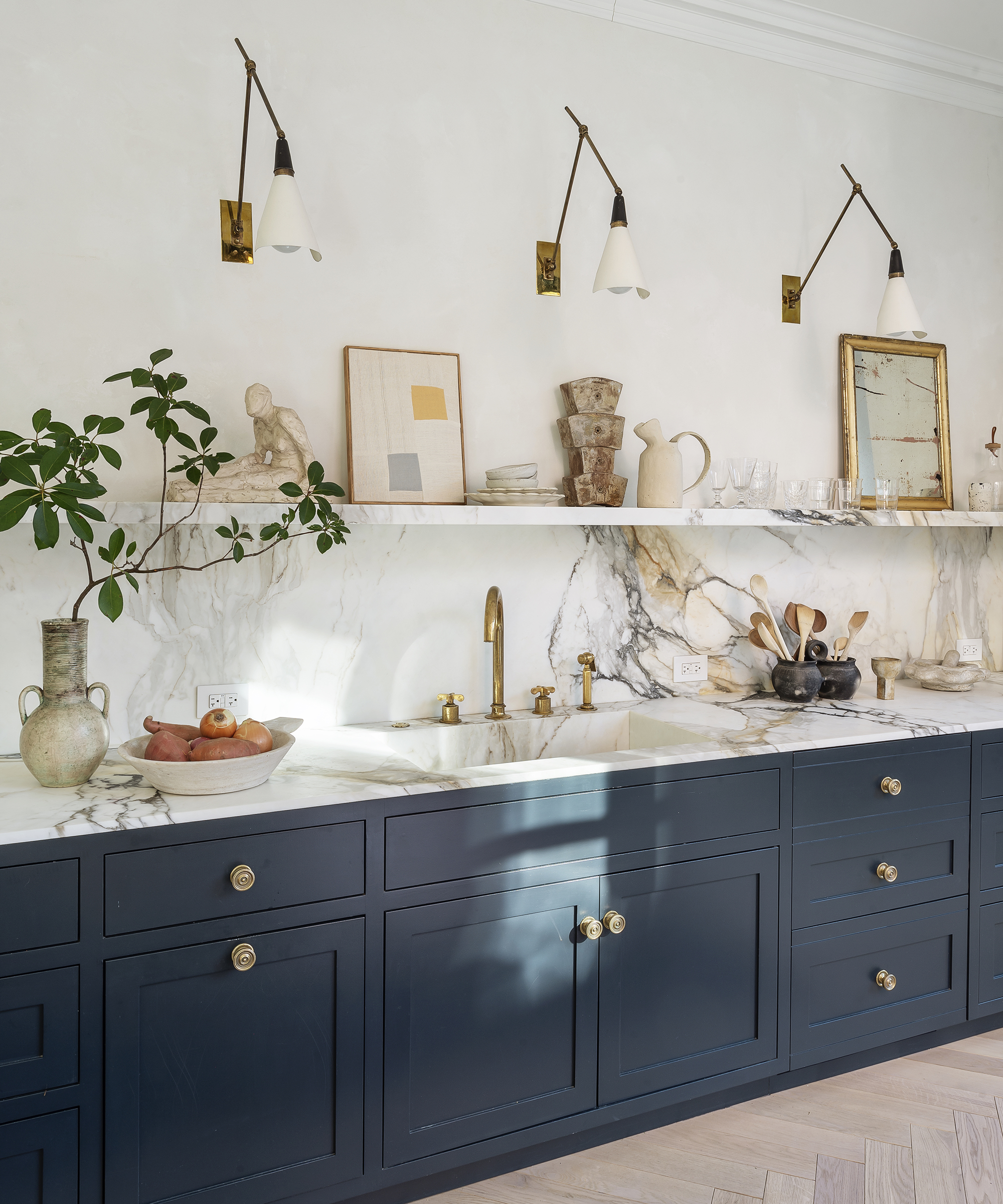
Making changes to your existing lighting is the first and most important step towards a lighter and brighter space with a low ceiling. 'The key to making the most of a room with low ceilings is to bring in lots of light,' begins interior designer Kathy Kuo. There are endless options when it comes to lighting, be it in a small kitchen or low-ceilinged basement. We recommend adding more light sources than you think you need, as this will give you options depending on the mood you would like to create and how you are using the space throughout the day.
Make the most of the lateral space you have in a low-ceilinged room with additional wall lighting, floor lamps, at Anthropologie, as well as smaller table lamps. 'I love the idea of adding wall sconces instead of a large ceiling light so that you get plenty of illumination but don't lose any of your vertical space,' suggests Kathy. Avoid heavy overhead fixtures that might feel oppressive.
Finally, don't forget to invite in as much natural light as you can by cleaning windows and clearing clutter, and remember to make use of strategic mirror placement. 'Maximize your windows by using lighter weight and lighter colored window treatments so that the room absorbs as much natural light as possible,' Kathy advises.

Kathy Kuo is a celebrated interior designer and international guru within the home and lifestyle space. She has 20+ years of experience in the design industry.
2. Open up the space with paint

Living room designed by Kati Curtis
There are various paint techniques for enhancing the sense of height in a small living room, such as painting a darker color up to the picture rail level and a lighter color from the picture rail and over the ceiling to make the ceiling feel further away or painting a diagonal on your wall to make the ceiling look higher.
But the paint finish you choose can also have a big impact on how light, bright, and lofty your space feels. 'Using high gloss lacquer paint to coat low ceilings is my favorite visual trick to visually "lift" the space, creating the illusion of a higher ceiling,' says Kati Curtis. 'The reflective nature of the mirror-like glossy finish allows light to bounce around the room, which can make the ceiling appear more elevated than it truly is.
'This luster not only adds a touch of sophistication but also opens up the room, making it feel less cramped and more expansive,' says Kati.
3. Create the illusion of height

Nick Lopez, CEO at LIME Painting recommends using vertical elements to draw the eye up in low-ceilinged spaces. 'Create the illusion of higher ceilings by integrating vertical elements such as tall floor lamps, bookshelves, artwork, and elongated mirrors,' he recommends. A slim, rectangular mirror placed perpendicular to the window can be effective.
'Opt for vertical stripes on wallpaper or paint, low-profile furniture, and opt for a streamlined ceiling light. Window treatments, like floor-to-ceiling curtains, elongate walls. High shelving draws the eye upward, giving the room more vertical space. Lastly, a minimal and uncluttered décor further emphasizes the feeling of spaciousness.' For decluttering tips, you can check out our guide on the best ways to clear clutter and create space.
4. Distract with decor
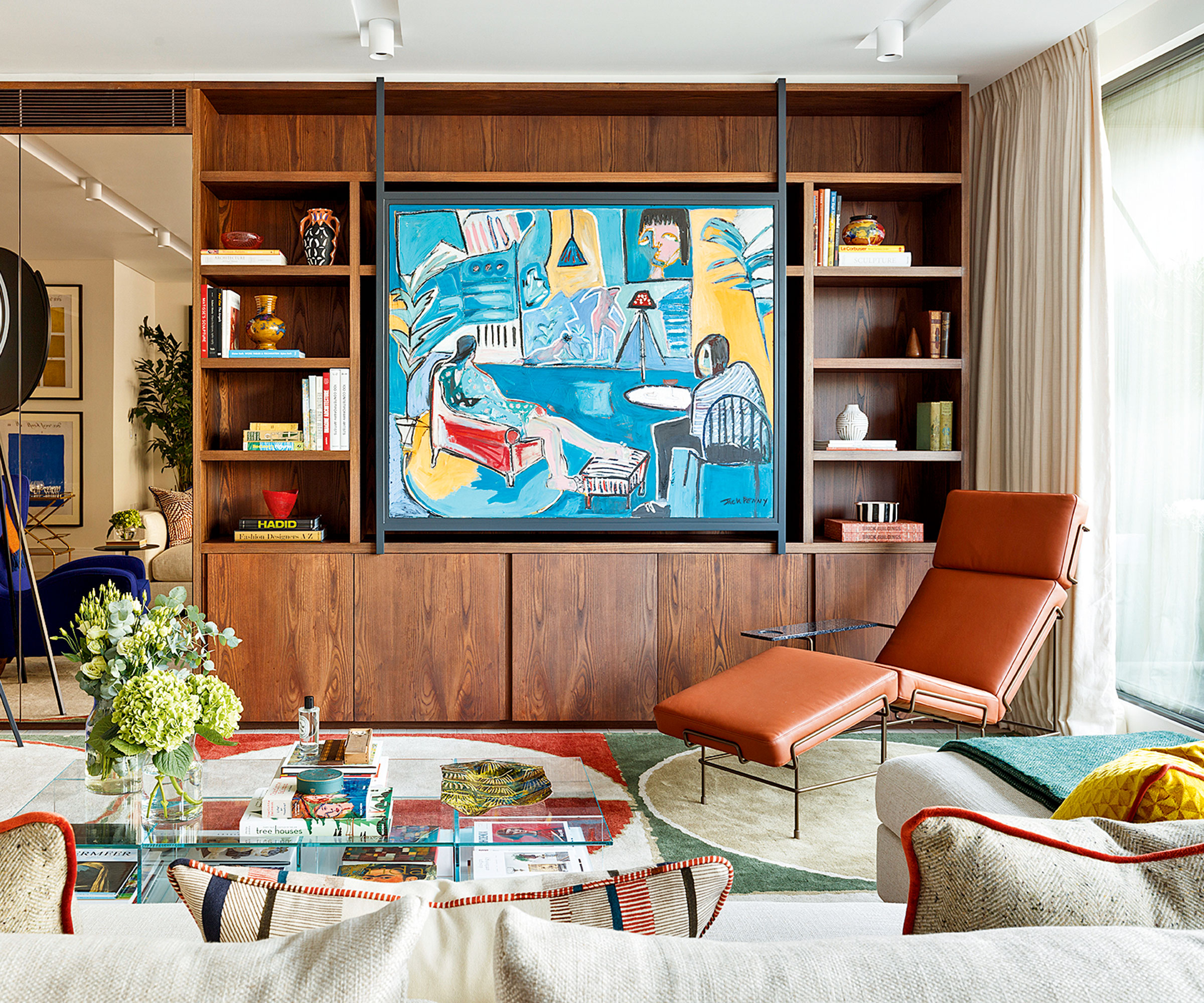
A good layout should mean the low ceiling simply isn't the prime focus as you enter the space. As well as thinking about creating a sense of flow by arranging furniture in a way so that there are natural walkways and avoiding furniture that feels too large for the space, you can use distraction techniques.
For instance, you could direct attention away from the low ceilings with an eye-catching piece of artwork hung a little higher than you would normally, or a fireplace that works as a clear focal point. Tall indoor plants draw the eye up and translucent furniture that the eye can travel through, such as a glass coffee table, also help to keep things airy.
Consider whether a new window treatment could help to draw the eye to the view outside, and when hanging curtains, hang them a little higher than the window frame to make the space feel taller.
5. Lighten up the flooring
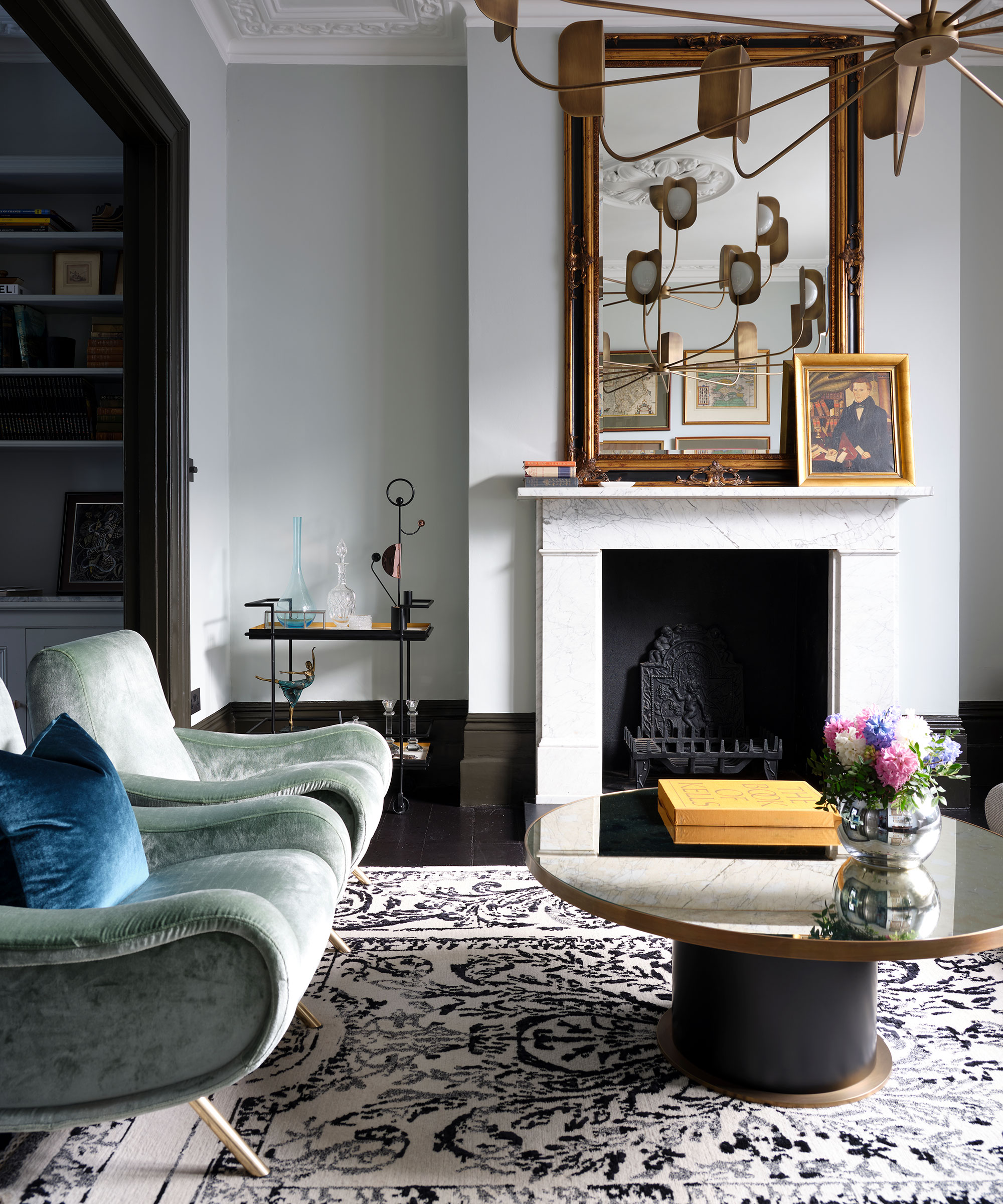
The ceiling is often dubbed the 'fifth wall' but the flooring is another key foundation of the 'envelope' of any room. If the flooring in your room is currently quite dark – perhaps you have dark wooden flooring or a large patterned rug – consider brightening it up with a pale-colored area rug, such as a large Berber rug in cream, or a pale jute tone. Combined with visual tricks, thoughtful paint choices and layered lighting mentioned above this will contribute to a light and bright space in the absence of high ceilings.
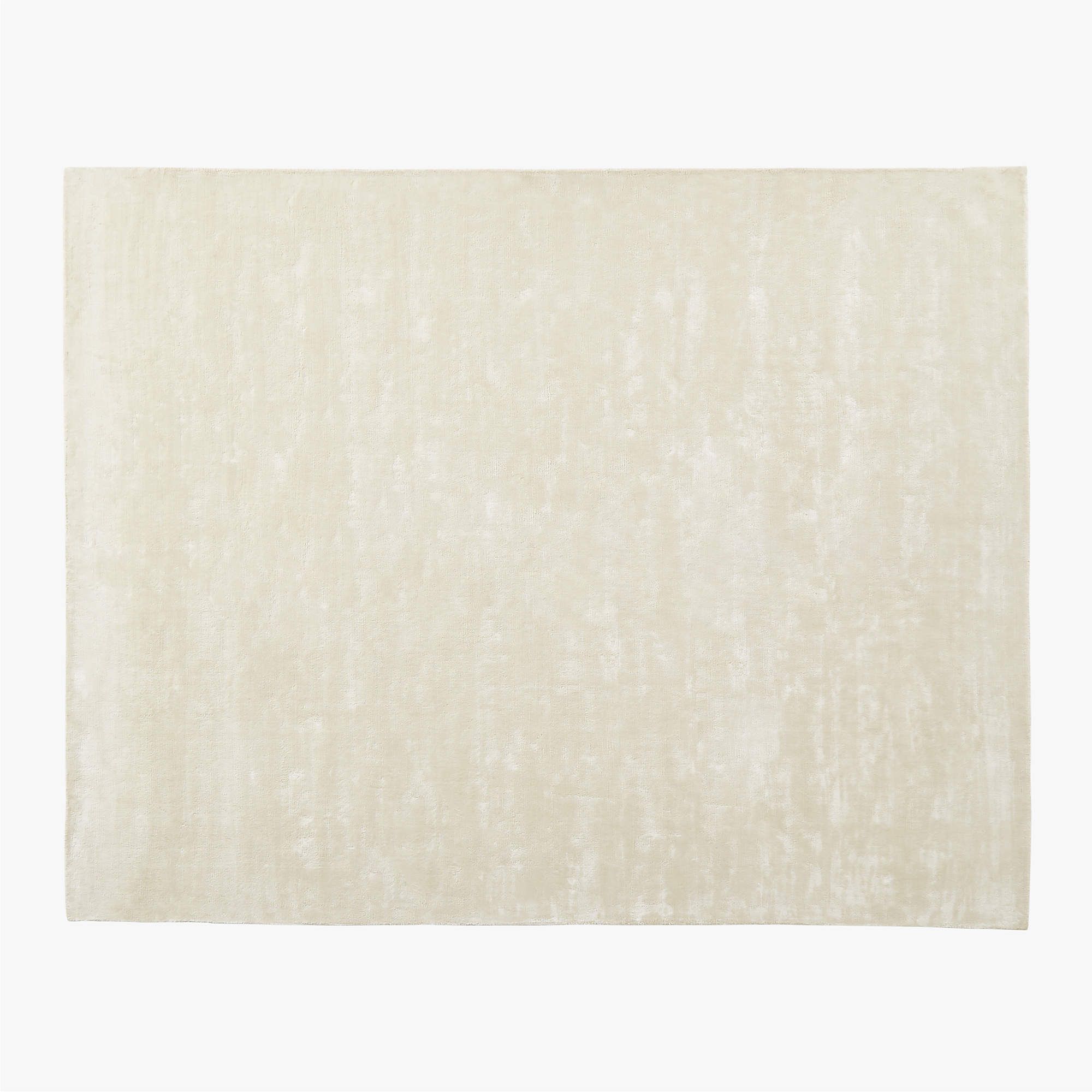
Sizes: Seven rectangular sizes, ranging from 2’6”x8’ to 12’x15’
Materials: 100% TENCEL Lyocell
Thickness: Flat pile (0.275”)
Machine-washable: No
FAQ
Should I paint a low ceiling the same color as the walls?
Paint expert Nick Lopez says a monochromatic paint scheme can make your room feel taller and more spacious, especially in light shades. 'The uninterrupted color flow can give an illusion of a larger room by drawing the eyes upward. While this method may make a room feel confined, using lighter or cooler shades like white, cream, or gray can counter this by making the ceiling appear more distant, further heightening the illusion of a larger, more open space.'
Consider adding decorative beams to a low ceiling, and painting them in the same color as the ceiling. This can create a farmhouse feel and sense of depth and height.
Sign up to the Homes & Gardens newsletter
Design expertise in your inbox – from inspiring decorating ideas and beautiful celebrity homes to practical gardening advice and shopping round-ups.

Millie Hurst is a freelance lifestyle writer with over six years of experience in digital journalism. Having previously worked as Solved Section Editor at Homes & Gardens and Senior SEO Editor at News UK in London and New York, Millie has written for an array of homes brands including Livingetc and Real Homes and was formerly Senior Content Editor at Ideal Home. She has written and edited countless features on home organization, decluttering and interior design and always hopes to inspire readers with new ways to enjoy their homes. She loves to weave nature-inspired decor and nods to time spent in Italy into her own home.
-
 6 things you should never throw in the trash – and what to do for safe disposal instead
6 things you should never throw in the trash – and what to do for safe disposal insteadFrom batteries to space heaters, experts reveal what not to throw
By Andy van Terheyden Published
-
 Worst-smelling plants to avoid – experts reveal 5 pungent species and suggest perfumed options to grow instead
Worst-smelling plants to avoid – experts reveal 5 pungent species and suggest perfumed options to grow insteadThese are some of the worst-smelling plants that can cause quite a stink
By Thomas Rutter Published